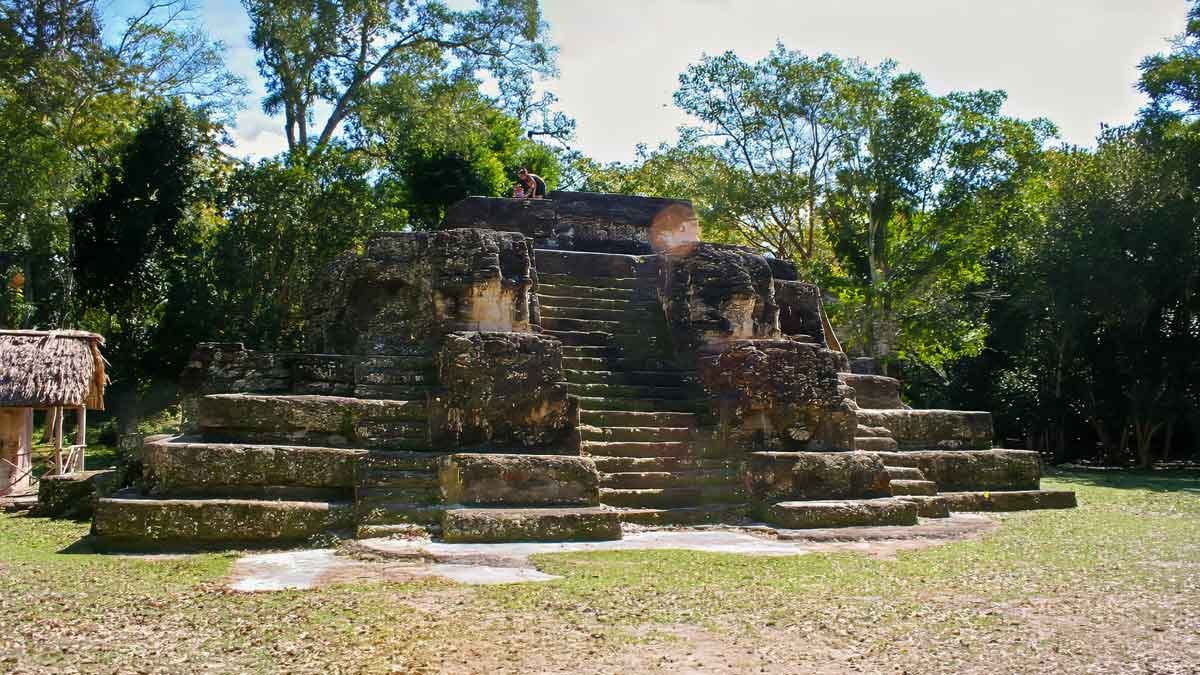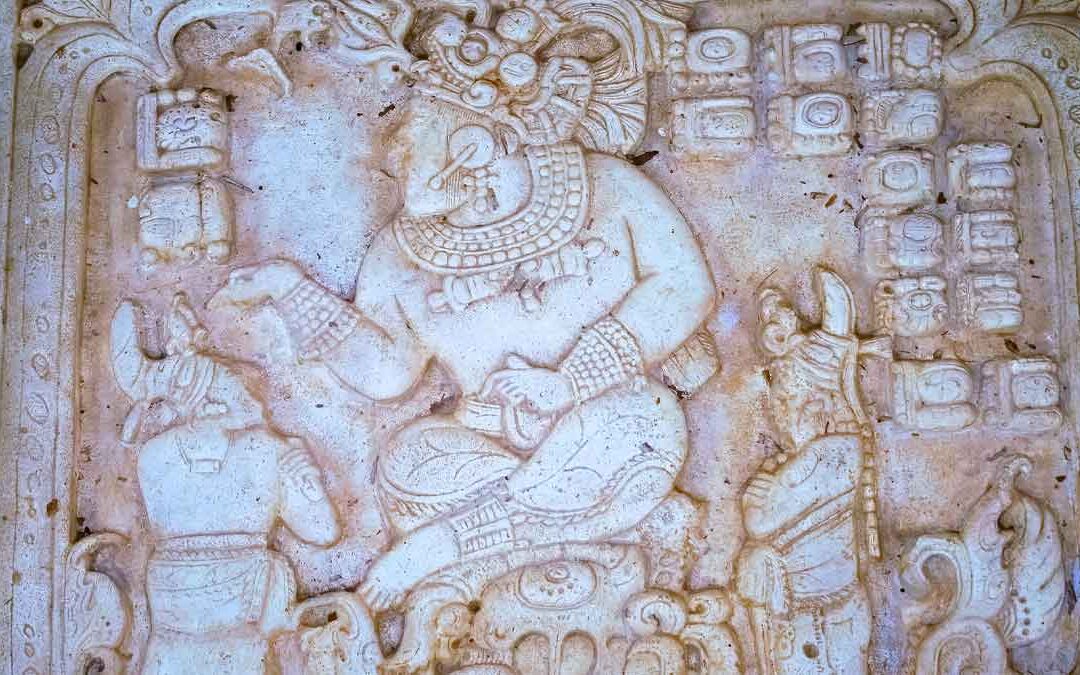Mayan Ruins in Guatemala:
Guatemala’s Mayan ruins are some of the most significant archaeological sites in the Americas, showcasing the ingenuity, artistry, and enduring influence of this ancient civilization. From monumental cities like Tikal to secluded gems like Yaxha, each site reveals the splendor and complexity of the Mayan world across thousands of years. This guide provides travelers with essential travel tips, historical context, and practical advice for visiting these iconic sites.
Tikal: The Jewel of the Mayan Civilization
Period: Classic Period, 250-900 AD
Entrance Fee: USD 11 (Q80) for international visitors; additional fees apply for sunrise and sunset tours.
Opening Hours: 6:00 AM – 6:00 PM
Distance:
From Flores: 65 km
From Flores Airport: 62 km
From El Remate: 34 km
Tikal Mayan Ruins In Guatemala Lowlands
Tikal was one of the most influential cities in the Mayan world. Its roots date back to 600 BC, and it reached its zenith during the Classic Period. This massive city covers 576 square kilometers and houses more than 3,000 structures. Among the highlights are Temple I, the Temple of the Great Jaguar, and Temple IV, which offers panoramic views over the rainforest. Tikal’s influence extended across Mesoamerica, and its grand plazas, astronomical observatories, and intricate stelae illustrate the artistic and scientific achievements of the Maya.
Travel Tips
Arrive at 6:00 AM to avoid crowds and experience the mystical morning ambiance. Guides are available at the entrance for about $80, approximately for a day tour, providing in-depth knowledge of Tikal’s history. Bring plenty of water, sunscreen, snacks, and insect repellent. Comfortable walking shoes are a must, as the site has uneven paths.

El Mirador: The Cradle of the Mayan Civilization
Period: Preclassic Period, 1000 BC – 150 AD
Entrance Fee: There is no entrance fee
Opening Hours: Open daily for tours and treks.
Distance:
From Flores: 84 km (treks start in Carmelita.)
El Mirador Archaeological Insights
El Mirador, often called the “Cradle of Mayan Civilization,” was an influential city during the Preclassic Period, reaching its peak around 300 BC. It’s renowned for monumental structures, including the La Danta pyramid, one of the largest pyramids globally, towering at 72 meters. This site showcases the impressive architectural abilities of the Maya long before the Classic Period. El Mirador’s influence diminished after 150 AD, but its architectural legacy endures.
Travel Tips
El Mirador is accessible by a multi-day trek from Carmelita, typically five days, and led by local guides. The trek costs $445 per person, including meals, camping, and gear. A helicopter tour costs around $550 per person for a faster but costlier option. This site is suited for adventurous travelers; bring rain gear, insect repellent, and water, and prepare for a physically demanding experience.
Yaxha: Serenity and Stunning Sunset Views
Period: Classic Period, 250-900 AD
Entrance Fee: USD 10 (Q80) for international visitors.
Opening Hours: 8:00 AM – 6:00 PM, with sunset tours available.
Distance:
From Flores: 73 km
From Flores Airport: 67 km
From El Remate: 45 km
Yaxha Guatemalan Mayan Ruins Archaeological Insights
Yaxha was a major ceremonial center strategically positioned between two lakes, providing scenic views and a tranquil atmosphere. With over 500 structures, including nine pyramids and three ball courts, Yaxha offers a comprehensive view of Classic Mayan ceremonial and social life. The site’s architecture and strategic positioning highlight its significance in Mayan trade routes and religious practices.
Travel Tips
A sunset tour at Yaxha offers breathtaking views over the lakes, with the main pyramid providing a stunning vantage point. Sunset private tours cost around $140 with a 2-passenger minimum, and a flashlight helps navigate in the dusk. Yaxha tends to be less crowded than Tikal, making it ideal for travelers looking for a quieter, reflective experience.
Quirigua: Towering Stelae and Historical Rivalries

Period: Classic Period, 600-900 AD
Entrance Fee: USD 11 (Q80) for international visitors.
Opening Hours: 8:00 AM – 4:00 PM
Distance:
From Guatemala City: 209 km
From Flores City: 225 km
Archaeological Insights
Quirigua, occupied since 200 AD, became a prominent political center during the Classic Period, known for its rivalry with the nearby city of Copan. The site is renowned for its massive stelae, the tallest in the Mayan world, which depict rulers and historical events. The Great Plaza houses these monumental structures, showcasing the Mayans’ sculpting skills and historical record-keeping.
Travel Tips
Quirigua is a small but historically significant site. Local guides can explain the political rivalry with Copan and interpret the meaning of the stelae. Mid-morning offers ideal lighting for photographing the stelae, capturing their impressive height and intricate details.
Dos Pilas: Fortified Structures and Warfare Insights
Period: Late Classic Period, 600-900 AD
Entrance Fee: There is no entrance fee.
Opening Hours: Open daily; visits typically require a guide.
Access:
You can reach it by boat from Sayaxché, traveling along the river route to Lake Petexbatún.
Archaeological Insights
Dos Pilas was a significant city-state embroiled in warfare and political intrigue. Its turbulent history was reflected in its extensive fortifications. The site’s carvings and hieroglyphic stairways provide insight into Mayan warfare and alliances. The site’s defensive walls and paths through dense jungle further emphasize its role as a fortified city during the Late Classic Period.
Travel Tips
Dos Pilas is recommended for adventurous travelers. Trails can be challenging, so sturdy footwear is necessary. Guided tours enhance the experience by providing historical context and navigating dense vegetation. Renting a horse to reach the Mayan site is also possible.
Uaxactun: Ancient Astronomy and Advanced Calendar Systems

Period: Preclassic to Classic Period, 1000 BC – 900 AD
Entrance Fee: USD 7 (Q50) for international visitors.
Opening Hours: 8:00 AM – 5:00 PM
Distance:
From Flores: 87 km
From Flores Airport: 85 km
From El Remate: 56 km
Uaxactun Archaeological Insights
Uaxactun, a notable center for astronomical observations, contributed significantly to Mayan advancements in mathematics and timekeeping. The site includes observatories where the Mayans tracked celestial movements and developed complex calendars, a testament to their scientific ingenuity.
Travel Tips
Guides are available to explain Uaxactun’s importance in Mayan astronomy. Early morning is ideal for visiting, as active wildlife enhances the serene ambiance. This less-crowded site offers a more personal experience for visitors interested in the Maya’s scientific achievements.
Practical Travel Tips for Exploring Mayan Ruins
- Accommodations: Flores is the primary lodging hub, offering options from budget hostels to mid-range hotels. El Remate provides lakeside accommodations and is closer to Tikal and Yaxha.
- What to Bring: Sunscreen, insect repellent, comfortable walking shoes, reusable water bottles, snacks, and a flashlight (for sunrise or sunset tours).
- Weather Considerations: The dry season (November-April) is ideal for exploration, but the rainy season offers lush landscapes and fewer crowds.
By following this guide, travelers can immerse themselves in Guatemala’s majestic Mayan ruins, marveling at the intricate artistry, architectural feats, and scientific achievements of an ancient civilization that continues to inspire. Whether you’re an adventurous trekker or a cultural enthusiast, these ruins offer an unforgettable glimpse into a remarkable chapter of human history.


